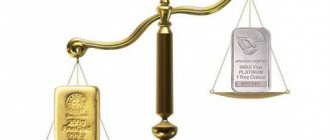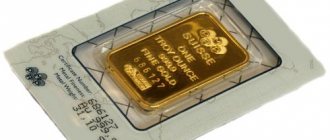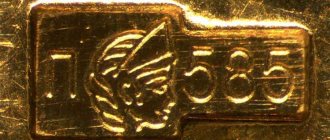In various sources translated into Russian, you can often find mention of an ounce. It is a unit of mass, weight or volume used in most British traditional systems of measurement. A typical ounce of avoirdupois (approximately 28.3 g) is 1/16 of the total weight of a pound.
This is a classic unit of measurement for the USA and Britain. It is mainly used in the United States of America for weighing packaged foods and portions, postal items, as well as for determining the density of fabric and paper, boxing gloves, etc. It can sometimes be found in the English-speaking sphere for other processes.
You will be interested: General Berezin Alexander Dmitrievich: biography, military service, memory
Varieties
In addition to the regular one, several other ounces are currently in use. These can be measurements of different quantities. This unit is used not only to clarify weight. It is used in the following cases:
- A troy ounce, weighing about 31.1 grams, is used to determine the mass of precious metals such as gold, silver, platinum, palladium, rhodium, etc.
- Ounce-force is a measure of weight, that is, mass.
- Fluid ounce is a measure of volume.
Historically, it was used in many industries in various fields where it was necessary to measure mass or volume.
Designation fl oz in perfumery.
As we found out, there are two volumes of fluid ounces - American and English. A reasonable question arises: what volume designation system is used for designation in perfumery: on perfumes and colognes?
The answer to this question is that both systems apply. It all depends on many factors. For example, Molecule perfume is produced in England, and accordingly, the English system is used in the designation. But if the Molecule is supplied to North American markets, then the volume is indicated in American fluid ounces.
Additional confusion is caused by rough rounding of volume in fluid ounces. Since the correspondence between milliliters and fl oz is very fractional (1 English Fl oz = 28.413063 ml, 1 American Fl oz = 29.573531 ml), perfume manufacturers round the values to the nearest and an exact match is not obtained. Plus, in the US, for some products, one fluid ounce is equal to 30 milliliters. In general, complete confusion.
Etymology of the name
You may be interested in: Division of multi-digit numbers: types, rules, properties and examples of solutions
Where does the term "ounce" come from? This name comes from the Latin uncia, a unit that was one twelfth of the Roman pound (a measure of weight).
The name was borrowed twice. Old English was first spoken as "insan" or "indsan" (a corrupted form of Latin). Then the word "ounce" began to be used in late medieval English.
The abbreviation oz came later from the related Italian word onza (now spelled oncia).
Why is there no single standard
An ounce is a unit that is measured in different ways. The explanation for this is as follows. It has been used historically in many parts of the world, at different points in history, and for different applications. Therefore, unequal mass standards were taken as a basis.
How much does an ounce weigh in different values? The international version of avoirdupois calls 28.349523125 437.5 grams. An international troy ounce is 31.1034768 480 grams, a French ounce is 30.59 grams. There are other numerical values. It is worth learning more about what types of this unit of measurement are used in the modern world.
International avoirdupois system (oz)
An international ounce is 28.349523125 grams, according to the International Yard and Pound Agreement of 1959. It was signed by the United States of America and the countries of the Commonwealth of Nations.
In the avoirdupois system, sixteen ounces equal a pound with the same name. It is defined as follows: 7000 grains. Therefore, one ounce totals 437.5 grains.
It is still the standard unit of weight in the United States. In the UK it ceased to be a legal unit of measurement in 2000, but is still widely used on an informal basis. It is also the traditional measure of portion sizes in British restaurants.
International troy ounce (ozt)
This unit of measurement is 480 grains. Therefore, a troy unit is equal to 31.1034768 grams. There are 12 troy ounces in the now obsolete pound of the same name.
Today this measure is used only to express the mass of precious metals such as gold, platinum, palladium, rhodium or silver. Bullion coins are the most common product produced and sold in troy ounces. However, precious metal bars also exist in grams and kilograms.
What is the ounce weight of these items? A kilogram bar contains 32.15074657 troy ounces. Throughout history, this measure was actively used to weigh gold. It has the following classification:
- Fine is a troy ounce that measures the pure gold content of a bar. It is calculated as follows: sample multiplied by gross weight.
- The standard is a measure of 22 carat gold with a purity of 91.66% (the proportion of precious metal to alloy is 11: 1).
Ounces to Grams Calculator
You convert ounces to grams
Calculator - Weight and Mass - Ounces to Grams
How many grams in ounces - convert oz to gr
1 Ounce (oz) = 28.3 Grams (g)
Ounces An ounce (abbreviation: "oz") is a unit of mass that has several definitions. Often an ounce is equal to 28 grams. Its size may vary in different systems. Today, the most widely used international ounces are avoirdupois, equal to 28.3495231 grams, and troy ounces, equal to 31.1034768 grams.
Grams A gram (symbol: “g”) is a metric unit of mass. One gram is equal to 1/1000 of a kilogram in SI or 1E3 kg. Today, the gram is a widely used unit of measurement for solids in food preparation and in grocery stores around the world.
Conversion of units of Weight and Mass
Convert from
Convert to
oz
=
G
| Basic units of weight | |
| Carat | car |
| Gram | gr |
| Kilogram | kg |
| Milligram | mg |
| Ounce | oz |
| Lb | lb |
| Ton | T |
| Other units of mass | |
| Assarion | assarion |
| Atomic mass unit (Dalton) | A. eat. |
| Attogram | ag |
| Bekah | |
| Centigram | cg |
| Dalton | |
| Dg | dg |
| Dekagram | dag |
| Denarius | denarius |
| Didrachm | didrachma |
| Drachma | drachma |
| Dina | dyn |
| Exagram | Eg |
| Femtogram | fg |
| Hera | gerah |
| Gigagram | Gg |
| Grain | gr |
| Hectogram | hg |
| Hundredweight | cwt |
| Hundredweight(UK) | cwt |
| Kip | |
| Mite | lepton |
| Megagram | Mg |
| Microgram | µg |
| Mine | mina |
| Mina(Biblical Hebrew) | mina |
| Nanogram | ng |
| Pennyweight | pwt |
| Petagram | Pg |
| Picagram | pg |
| Poundal | pdl |
| Quadrant | quadrans |
| Quarter | |
| Quarter(UK) | quarter |
| Quintal | quint. |
| Scruple | scr |
| Shekel | shekel |
| Slug | |
| Stone | st |
| Stone(UK) | st |
| Talent(Greek) | |
| Talent(Hebrew) | |
| Teragram | Tg |
| Tetradrachm | tetradrachma |
| Ton | |
| English ton | |
| Troy ounce | |
| Pharmacist's pound | |
| Basic units of weight | |
| Carat | car |
| Gram | gr |
| Kilogram | kg |
| Milligram | mg |
| Ounce | oz |
| Lb | lb |
| Ton | T |
| Other units of mass | |
| Assarion | assarion |
| Atomic mass unit (Dalton) | A. eat. |
| Attogram | ag |
| Bekah | |
| Centigram | cg |
| Dalton | |
| Dg | dg |
| Dekagram | dag |
| Denarius | denarius |
| Didrachm | didrachma |
| Drachma | drachma |
| Dina | dyn |
| Exagram | Eg |
| Femtogram | fg |
| Hera | gerah |
| Gigagram | Gg |
| Grain | gr |
| Hectogram | hg |
| Hundredweight | cwt |
| Hundredweight(UK) | cwt |
| Kip | |
| Mite | lepton |
| Megagram | Mg |
| Microgram | µg |
| Mine | mina |
| Mina(Biblical Hebrew) | mina |
| Nanogram | ng |
| Pennyweight | pwt |
| Petagram | Pg |
| Picagram | pg |
| Poundal | pdl |
| Quadrant | quadrans |
| Quarter | |
| Quarter(UK) | quarter |
| Quintal | quint. |
| Scruple | scr |
| Shekel | shekel |
| Slug | |
| Stone | st |
| Stone(UK) | st |
| Talent(Greek) | |
| Talent(Hebrew) | |
| Teragram | Tg |
| Tetradrachm | tetradrachma |
| Ton | |
| English ton | |
| Troy ounce | |
| Pharmacist's pound | |
Conversion result:
Other popular mass and weight calculators
- Carat to Gram
- Carat to Kilogram
- Carat to Milligram
- Carats to Ounces
- Carat to Pound
- Carats to Tons
- Gram to Carat
- Gram to Kilogram
- Gram to Milligram
- Gram to Ounce
- Gram to Pound
- Grams to Tons
- Kilogram to Carats
- Kilograms to Grams
- Kilogram to Milligram
- Kilograms to Ounces
- Kilogram to Pounds
- Kilogram to Tons
- Milligram to Carat
- Milligram to Gram
- Milligram to Kilogram
- Milligram to Ounce
- Milligrams to Pounds
- Milligrams to Tons
- Ounce to Carats
- Ounce to Gram
- Ounce to Kilogram
- Ounce to Milligram
- Ounce to Pound
- Ounce to Ton
- Pound to Carat
- Pound to Gram
- Pound to Kilogram
- Pound to Milligram
- Pound to Ounce
- Pound to Tons
- Ton to Grams
- Ton to Kilos
- Ton to Milligrams
- Ton to Ounces
- Ton to Pounds
Metric ounces
Some countries have revised these units to the metric system. Therefore, the question of how many grams are in an ounce will have different answers. This depends on the country of application. For example, the German apothecary ounce weighing 30 grams is very close to the previously widespread Nuremberg one. However, its divisions and multiples are expressed in the metric system.
In 1820, the Dutch redefined their ounce (in that country its abbreviation is ons). In the Netherlands it is 100 grams. Such amendments to the metric system were also adopted and used in Indonesia. In particular, they are studied according to the general education curriculum of primary schools. This measure is also mentioned in the Indonesian national dictionary.
Conspiracy theories fl oz.
And now some scandals, intrigues and investigations. What theories have we heard related to the designation “fl oz”. Laugh with us 
The letters fl oz indicate the durability of the perfume!
It turns out that the smaller the bottle, the less longevity of the perfume! Eureka!
The letters fl oz indicate the naturalness of the perfume!
As in the previous myth, it turns out that the naturalness of a perfume varies depending on the volume of the bottle. Paradox.
Fluid ounce
It is a unit of volume equal to approximately 28.4 ml in the English system. In the US the figure is about 29.6 ml.
A fluid ounce (fl oz) was originally the volume occupied by products such as wine (in England) or water (in Scotland). The meaning of the unit in question varied depending on the system of liquid measurement (such as used for wine or ale).
Various ounces have been used over the centuries, such as Tower and Troy. In international trade, the French one was especially popular. Therefore, the value of ounce in ml has always been different. The situation was aggravated by medieval practice, when a unit of measurement was not necessarily equal to the sum of its parts.
In 1824, the British Parliament defined a gallon as the volume of ten pounds of water at a standard temperature. It was divided into four quarts, a quart into two pints, a pint into four jills, and the last into five ounces. For many, this system seems quite confusing. According to it, there were 160 British fluid ounces per gallon. The result was that the weight of water in this measurement system was approximately 28.4 grams. This relationship is approximately correct even though the definition of the imperial gallon has already been revised to 4.54609 liters, resulting in a fluid ounce volume of 28.4130625 ml.
What is fl oz?
Fl oz (eng. fluid ounce) is the designation of a fluid ounce - a measure of the volume of liquid in countries where the metric system is not common (Great Britain, USA).
English fluid ounce
To measure and designate the volume of liquids in the UK, a system has been adopted in which one pint is equal to twenty fluid ounces.
1 pint = 20 fluid ounces, so one fluid ounce is equal to approximately 28.4 milliliters.
In England 1 fl oz = 28.4 ml
US fluid ounce
Historically, the English system of weights and measures, together with the colonialists, migrated to the territory of the United States. But over time, American measures underwent some changes and began to differ from the English imperial system.
One American pint is equal to sixteen fluid ounces.
1 pint = 16 fluid ounces, so one US fluid ounce is equal to approximately 29.6 milliliters.
In the USA 1 fl oz = 29.6 ml










